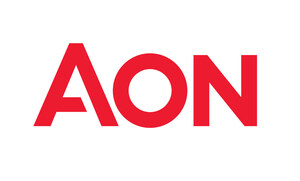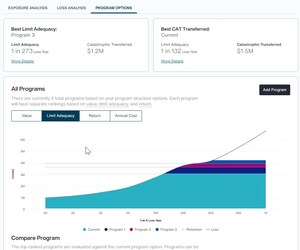Populism and terrorism converge to compound global risks
Aon publishes 2017 Risk Maps for Political Risk, Terrorism and Political Violence
- 2016 saw a 14 percent increase in the number of terrorist attacks worldwide, up to 4,151 from 3,633 in 2015. Western countries saw a 174 percent increase in terrorist attacks in 2016, up from 35 attacks in 2015 to 96 attacks in 2016.
- Oil and gas companies were the target of 41 percent of terrorist attacks on commercial interests in 2016 and the trend has continued in 2017.
- 2017 marks the first year in the last four where as many countries experienced a decline in political risk for investors as those experiencing an increase. This suggests a modest improvement in economic resilience after many years of deterioration.
- The potential for divergence between the U.S. and Europe around sanctions regimes could create uncertainty for investors in Iran, Russia and even Cuba.
LONDON, April 6, 2017 /PRNewswire/ -- A 14 percent worldwide increase in terrorist attacks in 2016 and populist nationalism are creating an increasingly volatile operating environment for international business. Aon's (NYSE:AON) 2017 Risk Maps covering Political Risk and Terrorism and Political Violence, produced in conjunction with Roubini Global Economics and The Risk Advisory Group, also confirmed that while Western countries saw a marked increase in terrorist incidents, attacks on these countries still account for less than three percent of terrorist violence globally. In 2016, the United States sustained the highest number of terrorist incidents in a decade, although, according to the Report, the threat is likely to remain moderate in 2017.
Terrorism and Political Violence
The terrorist threat continues to evolve, affecting an ever-wider set of sectors in more countries with more diversified tactics and intent to kill. Impacts range from loss of life to business interruption and disruption in the supply chain. Other violent risks are also evolving at the geopolitical level, leading to increased defence spending, more authoritarian forms of government and a weakening consensus between states. There are few indications of an overall improvement in violent risks in 2017. These developments have underlined the importance of considering crisis management perils that go beyond property damage, particularly in sectors that have been most affected such as oil and gas, transport and retail.
Scott Bolton, Director, Crisis Management, Aon Risk Solutions commented: "The shifting dynamics around terrorism and political violence, reflected in the global events seen in 2016, are presenting an increasing challenge for companies. Those with both domestic and international footprints have the potential to experience events that could impact their people, operations and assets. If we can understand what might reasonably impact an organisation and its people, then we are better able to apply 'best fit', consistent approaches to manage risk."
Henry Wilkinson, Head of Intelligence & Analysis at Risk Advisory: "Global politics in 2017 is moving in a more violent and crisis-prone direction. The balance of violent risks is starting to tilt from non-state actors back to states. Islamic State- and Al-Qaeda-linked terrorism remains a critical threat, threatening dozens of countries and key sectors, including oil and gas, aviation, tourism, retail and media. But in 2017, businesses must develop strategies to face more business-threatening risks from the geopolitical realm. Authoritarian nationalism is on the rise and with it the risks of interstate crises and conflict, coups and rebellion, as well as political risks."
Political Risk
Populism and protectionist risks in developed economies could lead to an increase in political risk in emerging and frontier markets as their resilience is challenged. While political risks remain high, particularly in the Middle East and Africa, reform efforts and past economic adjustment have increased resilience. Energy markets will continue to influence economic risks for many emerging and frontier markets. The expected stabilization in oil and gas prices will alleviate, but not erase, some economic pressures for producer nations, while amplifying financial vulnerabilities for importers, particularly in Asia.
Sarah Taylor, Executive Director, Head of Structured Credit and Political Risks, Aon Risk Solutions said: "The changing global landscape, driven by trade protectionism, populist policies and sanctions, is likely to have a significant impact on emerging and frontier markets. This makes it more important than ever for global businesses to understand and mitigate their exposures to political risk."
Rachel Ziemba, Managing Director Emerging Markets, Roubini Global Economics: "In the wake of policy uncertainty in developed economies such as the US and Europe, major trading partners in Asia as well as commodity producers in Sub-Saharan Africa and the Middle East and North Africa seem most exposed. Given the focus on trade, currency and migration renegotiation, we are watching for increases in exchange transfer risk, supply chain disruption and government interference in the economy. Within these regions, we see meaningful differentiation, with the richer countries of the Gulf Cooperation Council outperforming regional peers."
Key highlights from the 2017 report
- Oil and gas companies were the target of 41 percent of terrorist attacks on commercial interests in 2016 and the trend has continued in 2017. Nigeria and Colombia topped the list of countries affected by terrorism targeting the energy sector, with attacks by militants in the Niger Delta during the first half of 2016 causing Nigerian oil production to fall by 36 percent. Saudi Arabia, Iran, Russia, Venezuela and the U.S are vulnerable to production declines. As the global oil market slowly tightens, these supply shocks may have a more meaningful effect on price.
- Businesses are facing growing exposure to political violence risks worldwide. For the second successive year, more country risk ratings were increased (19) than decreased (11). The overall terrorism and political violence ratings are the highest they have been since 2013, capturing not only terrorism but also the risk of coups, civil and interstate conflicts and rebellions. There are now 17 countries at highest risk, representing epicentres of instability that emanate international terrorism threats and significantly increase business risk exposures in neighbouring states. Three belts of severe risk run through Africa from the Mediterranean to the Atlantic, through the Levant and through South Asia.
- Open trading nations like Chile, Colombia, Hong Kong, Malaysia, Singapore and Taiwan are exposed to increased political risk due to dependence on U.S. and other trading partners. Mexico and the Philippines are more vulnerable to declines in remittances if they occur due to trade restrictions. Brazil, India, Indonesia and Nigeria are more resilient due to large domestic economies, which are less reliant on exports.
- The Middle East and North Africa has the most dense concentration of high to severe risk countries in the world, with heightened political risk and elevated levels of political violence (for example, in Iraq, Syria, Yemen and Libya) spilling over to neighbours and undermining trade and tourism. Territorial losses for IS in Iraq and Syria will probably lead to a dispersion of the jihadist network, carrying serious threats implications for dozens of countries across the region and beyond, particular in Europe and Asia. The richer countries of the GCC remain much more resilient to political shocks, but economic vulnerabilities including government arrears to the private sector and higher cost of capital remain present.
Notes to editors
The Aon Political Risk Map captures changing risks for businesses and countries across emerging and frontier markets (non OECD countries). The map is produced in conjunction with Roubini Global Economics and 2017 marks its twentieth anniversary. Roubini Global Economics is an independent, global macroeconomic research firm. The firm's research combines expert insight with systematic analysis to translate economic, market and policy signals into actionable intelligence for a wide range of financial, corporate and policy professionals.
The Aon Terrorism and Political Violence map represents detailed empirical and intelligence-based assessments on terrorism threats and political violence risks. The map has been produced in conjunction with The Risk Advisory Group since 2007. The Risk Advisory Group is a leading, independent global risk management consultancy that helps businesses grow whilst protecting their people, their assets and their brands. By providing facts, intelligence and analysis, The Risk Advisory Group helps its clients negotiate complex and uncertain environments to choose the right opportunities, in the right markets, with the right partners.
For more information and to access the interactive maps and full report please visit the Aon website and the Aon Risk Maps Portal https://www.riskmaps.aon.co.uk/
Media Contacts
Madeleine Little +44 (0)20 7086 0347 / +44 (0)7979 701 236 / [email protected]
Tom Blackwell, FTI Consulting +44 (0)20 3727 1051 / +44 (0)7747 113 919 [email protected]
Donna Mirandola +1 312 381 1532 / [email protected]
Maneesh Sah +65 6221 8222 / [email protected]
About Aon
Aon plc (NYSE:AON) is a leading global provider of risk management, insurance brokerage and reinsurance brokerage, and human resources solutions and outsourcing services. Through its more than 72,000 colleagues worldwide, Aon unites to empower results for clients in over 120 countries via innovative risk and people solutions. For further information on our capabilities and to learn how we empower results for clients, please visit: http://aon.mediaroom.com.
Follow Aon on Twitter: https://twitter.com/Aon_plc
Sign up for News Alerts: http://aon.mediaroom.com/index.php?s=58
SOURCE Aon plc
Related Links
WANT YOUR COMPANY'S NEWS FEATURED ON PRNEWSWIRE.COM?
Newsrooms &
Influencers
Digital Media
Outlets
Journalists
Opted In





Share this article